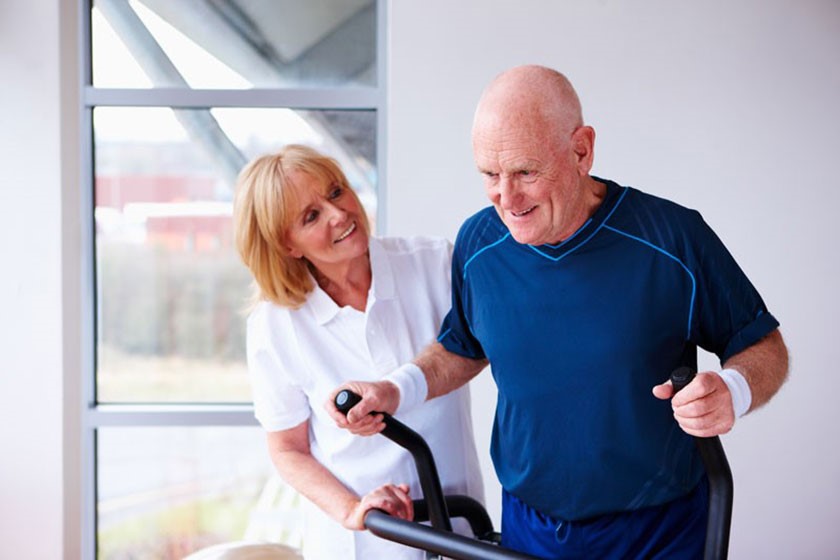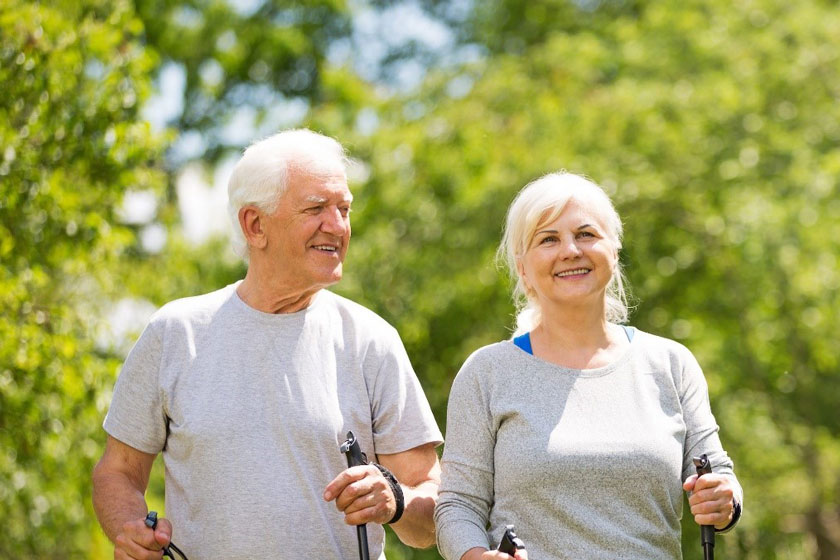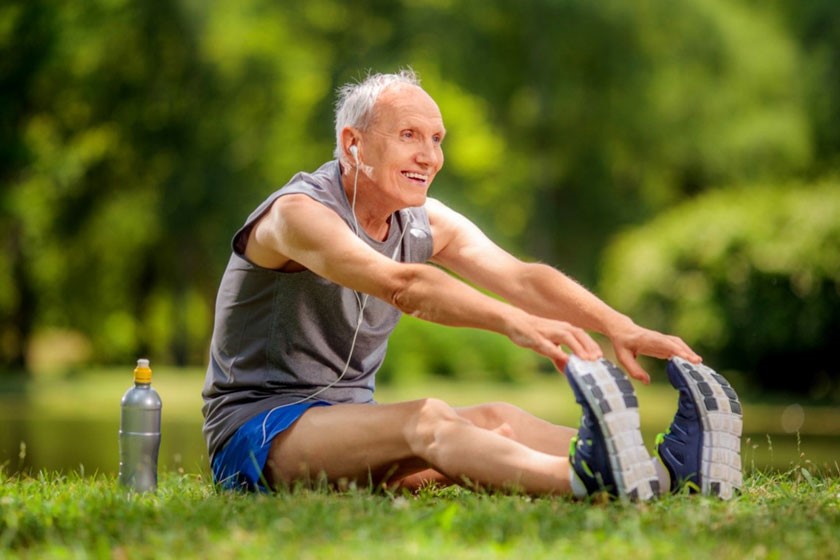
Our strength and flexibility decline as we age, resulting in physical and mental problems. Memory loss and Alzheimer’s are the most common mental health problems in old age. One of the ways to prevent dementia, exercises to improve memory in the elderly is to exercise. Cardio exercises are an effective and simple way to strengthen the elderly’s memory and keep their bodies and minds healthy.
All ages benefit from regular exercise. Cardio workouts for seniors increase blood flow to the limbs and cause the body to obtain more oxygen. Alzheimer‘s disease and dementia are preventable by addressing this simple issue. Active living has a more significant effect on the memory of the elderly than pills or other treatments.
Contents
Boosting Memory with Cardio Exercises for the Elderly
Older adults experience several changes in the brain. For instance, some cognitive abilities and short-term memory might become weaker. Sometimes even long-term memory and verbal and visual abilities are affected by ageing. The only way to prevent these problems is to keep your brain healthy.
Like all muscles throughout the body, the brain also requires exercise to remain sharp.
Check out Which exercises can wake up your body and brain?

As a rule, proper exercise keeps the body and its organs in good condition. Exercise improves the memory of the elderly and has surprising effects on cardiovascular health. Older adults must enhance their general health and memory to gain more independence.
Strengthening the elderly memory with exercise stimulates and improves the function of brain cells and prevents dementia. Even people who have never exercised at this age can benefit from the effects of physical activity on memory.
Learning new skills such as playing music, language learning for seniors, drawing, etc., helps improve memory by involving brain cells. Participating in social activities, talking to peers, and playing with grandchildren all affect the physical and mental health of the elderly.
For the elderly, we recommend two types of exercise:
- Aerobic exercises
- Anaerobic exercises
Aerobic exercise increases your heart rate, and the large muscles of your body and lungs are affected. This type of exercise involves the muscles for a relatively long time. On the other hand, anaerobic exercise causes sudden and intense pressure on the muscles, so it’s best to do it in a shorter amount of time.
The following are examples of appropriate exercises in old age that are effective in improving mental function and strengthening memory:
- Walking
- Jogging
- Swimming
- Gardening
- Cycling
Seniors can perform three types of cardio exercises, depending on their physical condition.
Low-Intensity Cardio for Seniors
This group of exercises can slightly increase the rate of heartbeat and breathing. Low-intensity exercises are good choices for the elderly suffering from mild conditions that make exercise dangerous or difficult. Walking is the best low-intensity exercise that the elderly can do. They can benefit from walking while doing their daily tasks of shopping.

Swimming is another low-intensity cardio exercise for seniors. If the elderly are not good at swimming, they can walk in the swimming pool.
All of these cardio exercises can increase the heartbeat and lead to an increased flow of food and nutrients to the brain, which can boost the mental power of the elderly.
Moderate-Intensity Cardio for Seniors
Cycling can be considered a moderate-intensity exercise. Those with balance problems should avoid cycling since they may be vulnerable to various hazards. Another moderate-intensity cardio activity would be running or hiking, which exerts more pressure than walking.
Check out exercises seniors should avoid.
Older adults who do not suffer from muscle weakness and physical problems may include running in their daily routine. However, running outdoors in the park is better than running on a treadmill. The intensity of running depends on the level of health and physical strength of the elderly.
In addition, running with a group of friends of the same age is recommended. As a result, you will be more active with your friends and have a higher motivation to do regular exercise.

There is no best workout time for seniors. It depends on their health and strength. Even a much smaller amount of daily exercise will eventually improve memory function. But practicing exercise for half an hour three times a week is recommended for cardiovascular health.
Thirty minutes of regular exercise has fantastic effects on brain muscles. But it is difficult for seniors who have just joined the ranks of athletes to do 30 minutes of continuous activity. Exercising three times a day for 10 minutes is suitable for these people. For example, run for 10 minutes and walk at a slower pace for 5 minutes.
High-Intensity Cardio for Seniors
These exercises put much strain on the joints. The best senior cardio workout is exercising on an elliptical machine to reduce the pressure on your ankles and knees.
A recent study conducted at McMaster University revealed that high-intensity cardio for the elderly is the best way to improve memory function. The study took place among adults aged 60 to 88 over 12 weeks. For instance, those who did high-intensity cardio showed more significant memory improvements than other seniors who did low- or moderate-intensity workouts.
Stretching exercises to improve the memory of the elderly
Aerobics is one of the most effective exercises to strengthen memory in seniors. With aerobics, the coordination between the movements of the limbs increases. Therefore, the body is in a balanced position. In addition, older adults who participate in group aerobics classes have higher morale and mental capacity.

Even when sitting still, you can do stretching exercises to strengthen your muscles and increase your mental strength. Poor memory is one of the consequences of losing brain cells that will improve with regular exercise. For example, raise your hands above your head and count to 10. Do the same for the sides and front. Jumping jack movement without jumping is also very effective.
Move your legs left and right. Get help from a chair and bend your knees. If you have knee pain, sit on a chair and lift your legs off the floor.
The goals of exercise
Although a fitness program designed for older people should have similar principles to those intended for other groups, it should also be carefully planned. Most elderly patients do well with low-intensity exercises. According to experts, the following should be the aim of exercise in the elderly:
- Maintaining a functional state for independent living
- Reducing the risk of cardiovascular diseases
- Slowing down the progression of chronic diseases
- Improving mental health
- Providing opportunities for social interaction
Older adults should be encouraged to add cardio exercises to their program. That is to say, low-intensity exercise reduces the risk of injury and regulates the heartbeat and temperature of the body.
The exercise should be short at first, and gradually they can increase the duration of each session and the intensity. Seniors also need more time to warm up and cool down. Some people can only work for a short time in a training session. Due to structural and functional limitations, training sessions should be more concise, less intense, and more repetitive.
Therefore, a comprehensive physical fitness program certainly includes stretching, flexibility, strength, and balance exercises for the elderly.
However, it may be necessary to adjust the type of exercise that depends on the individual’s medical condition or pre-workout health.
Final words
Exercise cannot enhance the memory of the elderly overnight. According to experts, the minimum time for brain function to improve after exercise is approximately six months. But as soon as they begin exercising, they will notice increased energy and vitality. Share with others if you follow any exercise plan in the comment section.
I am 62 years old, and I have started running from the age of 30. Running is my favourite cardio exercise, and I consider it a leisure activity. Whether I am running on my treadmill or training outdoors with my friends and loved ones, there is always a running style that I can enjoy and a place that I can explore. The best thing about running is that I can do it alone, or I can do it with my loved ones, and also I can do it whenever I want every day.
I always advise people to do speed walking a few times per week for five miles at a shot. I can speed walk at about four mph.
The conditioning from speed walking will keep you in excellent shape. Add to that a clean diet, and you’ll be in excellent condition. Memory enhancement will happen gradually through this…trust me.
After completing one year of speed walking, I saw a huge change in myself.
And as far as age is concerned, there are people in their nineties and older who still run and enter races… do not limit yourself!!
How intense should a workout be to be considered dangerous for seniors? Is there a particular number of exercises or workout plans that you are to avoid as a senior? Can you still do high-intensity exercises for a minimal number of repetitions??
I’m in my late 50s and consider myself an active person. I used to run a lot. Now I swim, and I do speed walking. Can I do HIIT workouts? I read somewhere that HIIT is not safe for people after 50.